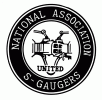

Western Division
Rev. Nov. 19, 2001
|
|
|
|
|
|
|
The Minnesota Heartland Railway (Western Division) models a granger railroad typical of Minnesota in the late 60’s. On the Heartland, agricultural products are the key commodities handled by the railroad. It is an era where thriving little towns still dot the highway maps of the Midwest, where local grain elevators, skyscrapers of the prairie, anchor the business district. It is years from the ravages of the freeways, the gasoline crisis and the discount malls. Western Division operations feature the MHRy’s shortline style of operation surrounded by the Class I operations of the SOO Line and the Northern Pacific. The MHRy serves local elevators and industries, depending on the Class I railroads for access to world markets and supplies for the local economy.
This MHRy gathers grain from elevators, classifies it and transports it to online users or to the Twin port for shipment across the nation and the world. It is an operating scheme similar to coal hauling railroads, with the operating advantage that the covered hoppers do not need to have removable loads modeled to simulate loads and empties. The layout is designed to operate point-to-point, with a link that allows continuous operations as desired.
The Western terminal of the MHRy is the town of Marilyn,
on the banks of the Cache Flow River. As you enter the train room,
Marilyn is along the left wall. Here, the SOO from Twin Ports crosses
the NP line from DaRange, a hidden storage area behind the hills that extend
toward the Rumansota River. Marilyn features a small interchange
yard, a major grain processing facility, and several small local  industries.
The MHRy travels east from Marilyn, through the
industries.
The MHRy travels east from Marilyn, through the  trainroom
bathroom, to Heartland Jct. where it leaves SOO right of way and travels
to the Centralsota Industrial Park. It is in Centralsota that the
Western Division ends and MHRy traffic continues on to Lake Wobegon for
interchange with the Great Northern at the MHRy’s eastern terminal.
Ted Larson of Fairport NY models the Eastern Division of the MHRy and the
Great Northern junction.
trainroom
bathroom, to Heartland Jct. where it leaves SOO right of way and travels
to the Centralsota Industrial Park. It is in Centralsota that the
Western Division ends and MHRy traffic continues on to Lake Wobegon for
interchange with the Great Northern at the MHRy’s eastern terminal.
Ted Larson of Fairport NY models the Eastern Division of the MHRy and the
Great Northern junction.
The portion of the SOO Line modeled originates in Twin Ports yard, located to the right as you enter the train room. Twin Ports is a busy terminal, with facilities to transfer harvest products for shipment to world and national markets. It is also has a major grain processing facility. Twin Ports boasts a large regional yard and engine facility shared by the SOO and NP. From Twin Ports, the SOO main heads west to Marilyn and then to DaRange hidden storage.
The NP heads west by exiting the Twin Ports yard to the east, then north similar to the route the NP took from the St. Paul Union Depot for many years. In addition to yard work in Twin Ports, the NP turn also services Asuncion, the town located at the summit of the climb out of the Rumansota River Valley.
The golden fields and rich colors starting to appear on the trees tell us that it is fall, the season when the fruits of the harvest fill the hoppers and boxcars of the MHRy. Passenger traffic has faded but the SOO Line still runs a local where the rich maroon and gold colors of the consist complement the fall pallet of Mother Nature. The Northern Pacific Mainstreeter occasionally detours onto these rails, giving the lucky railfan the illusion that this is mainline railroading. Here are some other scenic points on the MHRy.
 Rumansota
River Valley. Ahead as you enter the train room. Watching trains
climb the grade out of the valley is a favorite for railfans. (Members
of the Minnesota Heartland Board of Directors, Elizabeth Zieska, and Jeffrey
Larson, observing roadbed construction in the Rumansota River valley.)
Asuncion is the town at the top of the grade.
Rumansota
River Valley. Ahead as you enter the train room. Watching trains
climb the grade out of the valley is a favorite for railfans. (Members
of the Minnesota Heartland Board of Directors, Elizabeth Zieska, and Jeffrey
Larson, observing roadbed construction in the Rumansota River valley.)
Asuncion is the town at the top of the grade.

Asuncion. Industry includes Bosch Beverage
Brewery and wholesale produce warehouses. Asuncion is an important
on-line destination and a source of traffic for the NP.
Centralsota Industrial Park. This facility is where the MHRy Western Division terminates. The Industrial Park features a grain elevator, a corn processing facility and connection with the Eastern Division of the MHRy. This connection will be accomplished with a “cassette” that will be built at the end of the mainline.

Cannon River Valley. 30 years in the Artillery
means we feature the Cannon. The Cannon River flows into the Rumansota
from the right as you enter the train room. The tracks that follow
the River are great for railfanning, and the DCC sound systems echo through
the valley for a great effect.
Twin Ports Yard. Regional yard and engine facilities. A rail-to-water transfer point for the grain and a major yard complex. For the railfan, motive power from interchange partners is often seen in the yard or engine facility.
ERA MODELED. The era modeled is October of 1969, yet license has been taken to stretch the era to run models I like. First generation F units still rule the rails although SOO and NP steam as well as rolling stock of that era make appearances when the mood suits the Western Division Super. When the layout is open for public open house, modern equipment often runs so that everyone who visits can see the wonderful variety of items available in S.
About S. The MHRy features many of the newest
items available in S. It is fantastic to see all of the new items
becoming available, one of the nice features of S mentioned by many visitors
is that you can actually “see” the features.
| About the Layout | Ken's Models | |
| S Scale, 3/16” = 1’, 1:64th scale | MHRR | |
| Approximately 400’ Mainline | Soo Line | |
| Minimum Mainline Radius 48” | ||
| Maximum Grade 3% | ||
| Train Control, NMRA DCC |

![]()